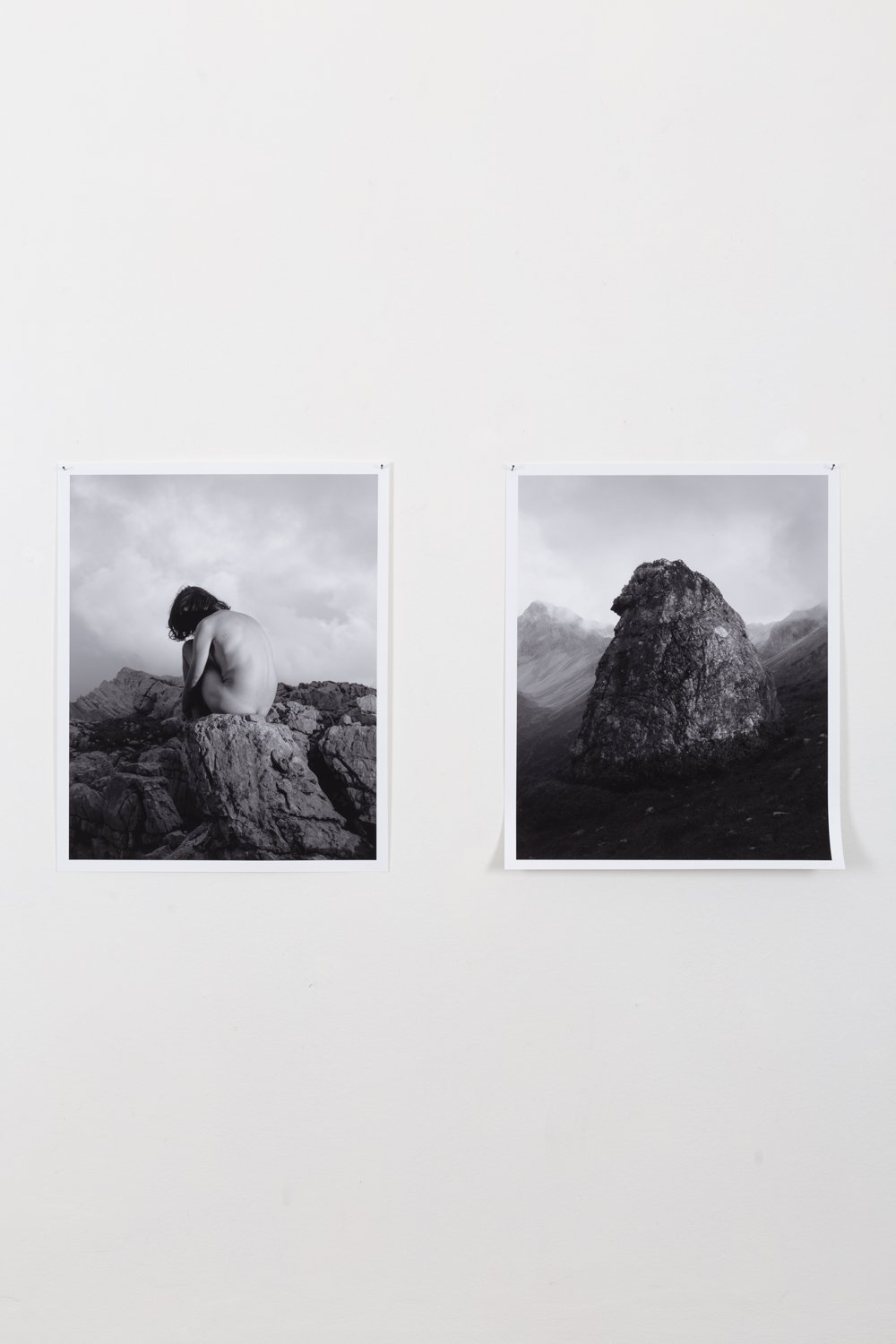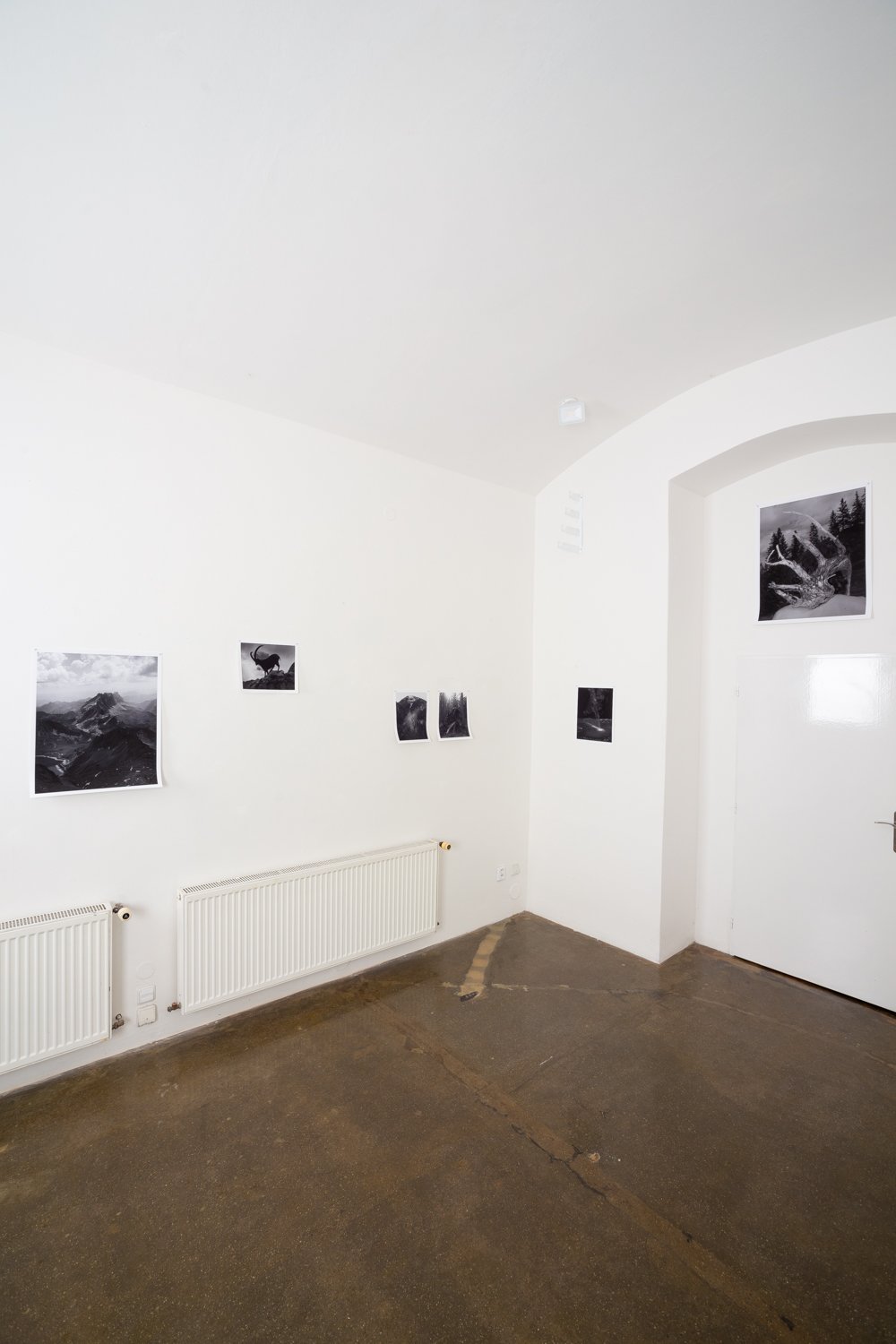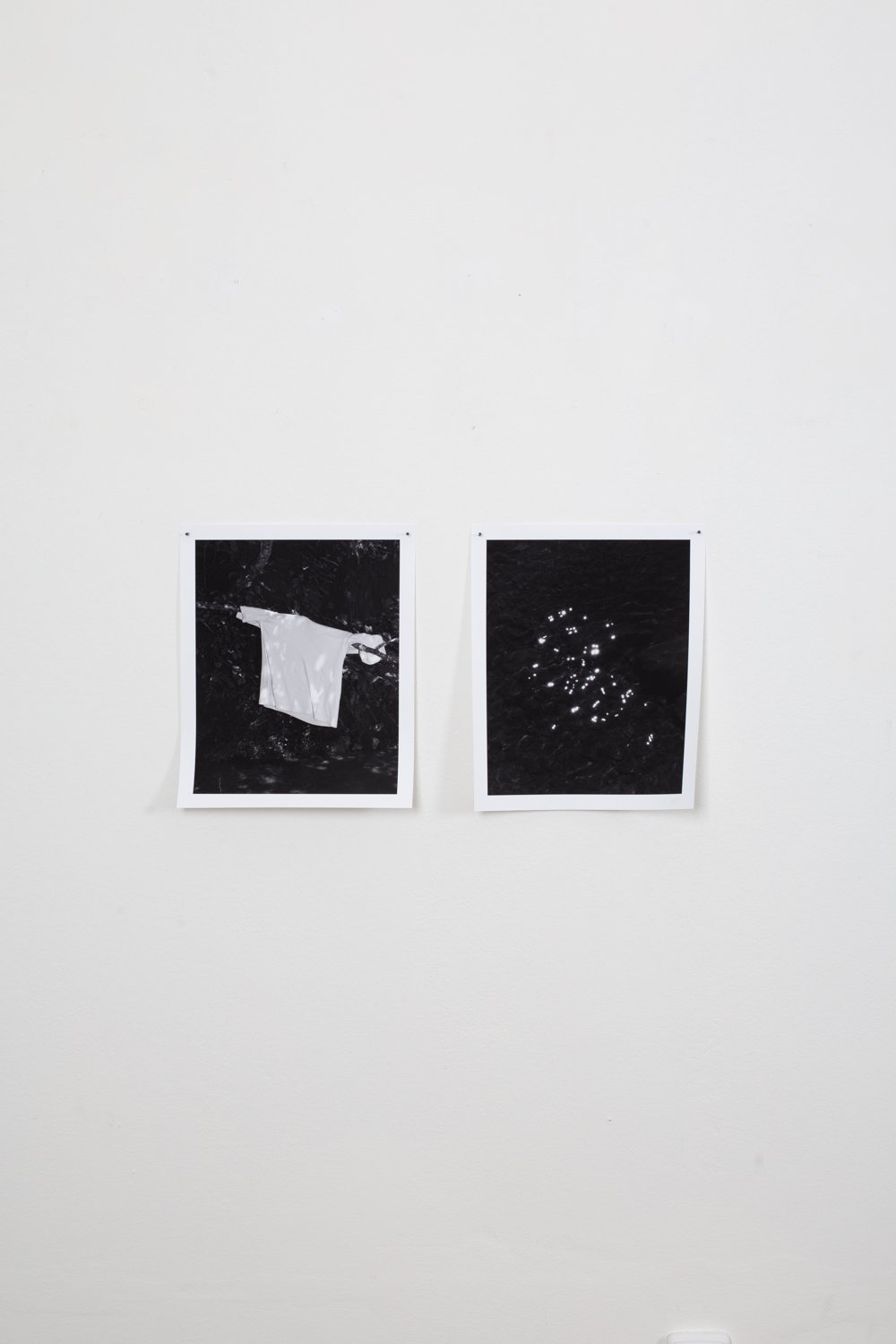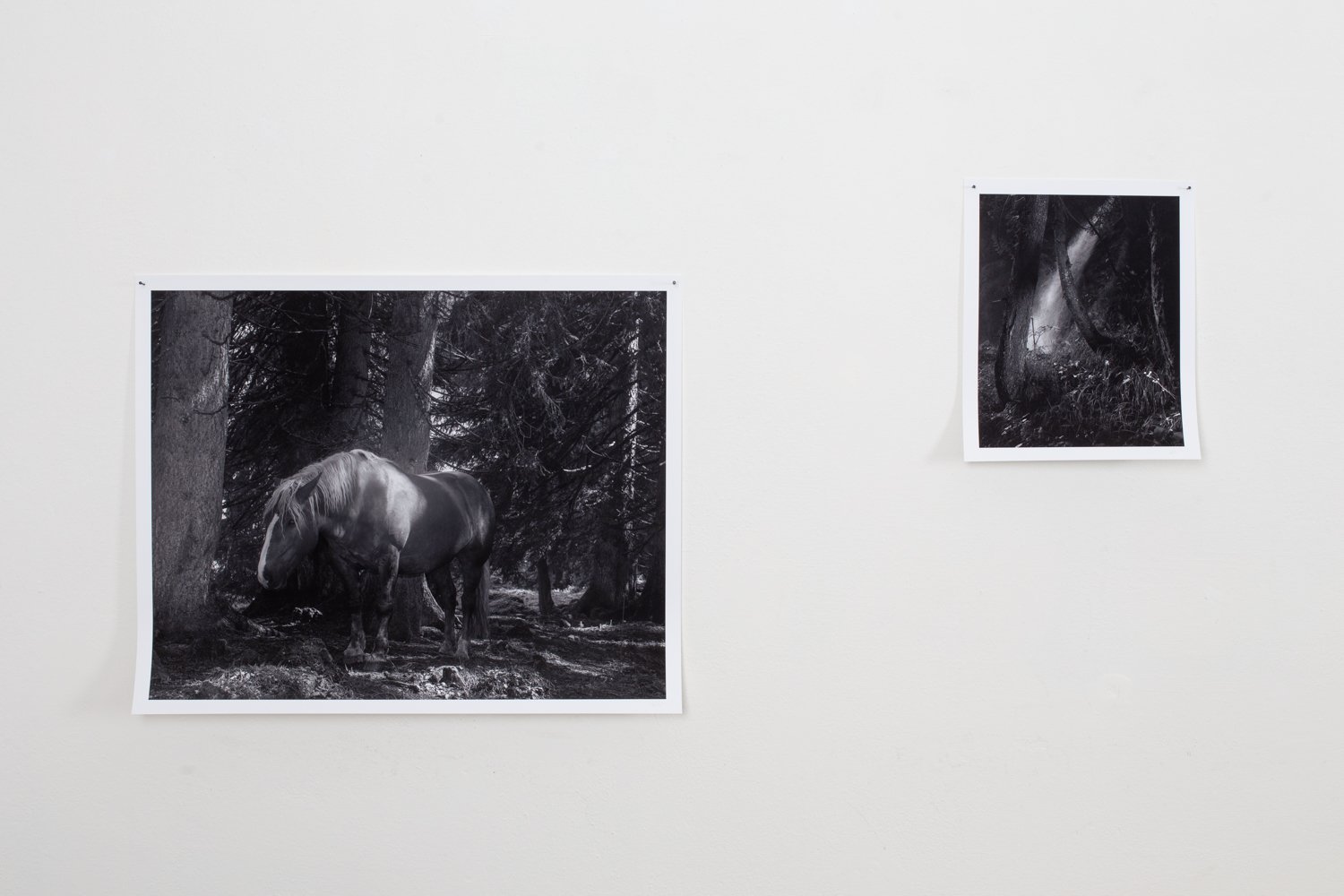Rick Van der Klooster
Poetics Aesthetics Composition series
HIDDEN Bořivojova
24. 5. / 17. 7. 2022
Working mostly with a camera, Rick creates black and white photographs, with a focus on emotion and ambiance. The interesting aspect of photography for him is that he takes from the existing world and transforms it into two-dimensional planes where a bright flash and monochrome tones convey symbols and metaphors that provoke inner reflection. For him, the work exists within the boundaries of his themes but challenges the viewers' own experiences, and he believes that is where something magical happens between the photograph and the one who’s examining it.
A Conversation between the Mountain and the River
Death is when no one remembers you,
so it reads in German on a memorial stone on the corner of a steep mountain road high in the Austrian alps. I think there is truth to that, I don’t know the person on the memorial stone, but these mountains remind me of my mother who died when I was eighteen years old. She always brought me along to the mountains on our holidays, trying to teach a child from the Netherlands the beauty of the alpine landscape with its magical pine forests, crystal clear rivers, snow capped mountains and roaring waterfalls.
As a child I never quite got the feeling my mother experienced wandering through this particular landscape. Almost five years after my mothers passing, I went back to the mountain that seems so still, but moves with great determination and the river that flows so carelessly and yet so destructive. They started talking to me.
In ‘A Conversation between the Mountain and the River’ I walk the known paths I once walked with my mother, but also ascend high over the peaks and descend into their rivers. They make me remember and teach me about how to deal with the grief of losing your mother.
In a way the landscape is giving me back what I’ve lost.
What does poetics mean to you?
When something makes me feel, think and reflect without forcing me to a certain outcome. When an image or a composition of text that doesn’t say anything literally, but respects the reader to interpret it with his own intelligence, experience and emotion. That is what poetics mean to me.
Especially in a world where most images are tools that make you want something, buy something, go somewhere etc. I think this is where poetical images and texts can make you break free from that ever influencing visual world that lives on our screens, billboards in the city and flyers in our mailbox. That is why I try to have as much honesty and respect in my personal photographic projects, they’re not there to make you say ‘Ah yes, I totally understand’ but rather make you reflect on your own thoughts, emotions and experiences.
What does aesthetics mean to you?
In the first year of art academy one of my favorite teachers told me:”‘Aesthetics is what draws someone to the work in the first place -and then the meaning behind the work should capture the reader's full attention”. Almost six years later I think that is still true for me. When I go to an exhibition, order a book or something on the street catches my eye, it is mostly a pleasing aesthetic. But then the idea behind it should match that aesthetic. Now I also think everyone has other aesthetic preferences so there is more to it than just a beautiful subject or composition.
There is a downfall however to images that thrive solely on their aesthetics. It is easy to recreate something, conscious or unconscious, that is aesthetically pleasing. So in my photographic practice the idea and personal urgency is the most important thing, from here on I experienced that aesthetics will change over time. With this way of working I let the idea shape the form the work takes; in black and white, in color, usage of flashlight and compositions. The ‘marriage’ between the theme and subject comes first and will decide how the image is going to look like.
What does composition mean to you?
If the poetical idea comes together with the right aesthetic I think of composition. It should match in a way that makes the photograph magical. And then the sequence of those photographs in combination with text; a title, description or just a single word can compose a visual world to let the underlying themes live on in the captured subjects.








